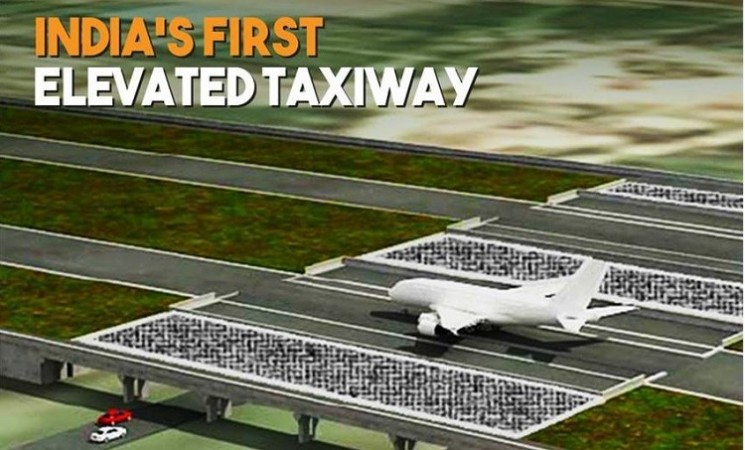
New Delhi: To elevate the travel experience of both international and domestic passengers, Indira Gandhi International Airport in Delhi is gearing up for the grand inauguration of its impressive 2.1-kilometer-long dual-lane Elevated Cross Taxiway on July 14th. This exciting development will be complemented by the operationalization of the fourth runway on the same day.
The introduction of the Elevated Cross Taxiway (ECT) will significantly reduce the waiting time inside the aircraft from an average of 20-25 minutes to just 10 minutes. The honorable Union Civil Aviation Minister, Jyotiraditya Scindia, will have the privilege of inaugurating India's first Elevated Cross Taxiway at Indira Gandhi Airport. See the key highlights of this remarkable addition, as follows.
Length and Connectivity: The dual-lane ECT spans a total length of 2.1 kilometers, connecting the Northern and Southern airfields situated on the eastern side of the airport.
Enhanced Passenger Experience: With the implementation of the ECT, the post-landing waiting time inside the airplane is expected to be significantly reduced. Aircraft will now require less time to reach Terminal 1 after landing. This enhanced efficiency also applies to the take-off process. The distance an aircraft needs to cover from the third runway to reach T1 will be reduced from the current 9 kilometers to just 2 kilometers.
Reduced Waiting Time: The ECT will not only decrease the distance between the two airfields but will also save passengers approximately 20 to 7 minutes before take-off. However, the waiting time may vary based on factors such as the direction of aircraft landing, as confirmed by Delhi International Airport Limited (DIAL).
Key Benefits of the ECT: According to officials from DIAL, the inauguration of the ECT will enable the airport authority to achieve multiple benefits. These include reducing aircraft emissions, conserving valuable resources like aviation turbine fuel (ATF), and enhancing overall operational efficiency. The primary advantage of the ECT lies in its ability to shorten the taxiing distances for aircraft.
Carbon Emissions: Even a minor reduction in the distance between airfields can have a significant impact on CO2 emissions. The optimized taxiing routes and aircraft operations facilitated by the taxiway are expected to save approximately 55,000 tonnes of CO2 annually. This substantial reduction aligns with the airport's ambitious goal of becoming a "Net Zero Carbon Emission Airport" by 2030.
India's Pioneering Elevated Taxiway: Indira Gandhi International Airport proudly stands as India's first airport to feature an Elevated Cross Taxiway. The successful implementation of this groundbreaking project showcases DIAL's unwavering commitment to creating environmentally sustainable infrastructure and its aim to become a "Net Zero Carbon Emission Airport" by 2030. The Eastern Cross Taxiway positions Delhi Airport as a forerunner among Indian airports, elevating the passenger experience and future-proofing its operations.
Robust and Reliable Structure: The dual-lane Elevated Cross Taxiway is designed to accommodate the safe and simultaneous passage of two large aircraft. Its sturdy structure, classified as Code F, ensures the utmost safety and efficiency for all air traffic operations.
Get ready to embark on a transformative journey at Indira Gandhi International Airport as the ECT redefines the standard of modern aviation. Experience the future of air travel where time is optimized, emissions are reduced, and passenger satisfaction soars to new heights.